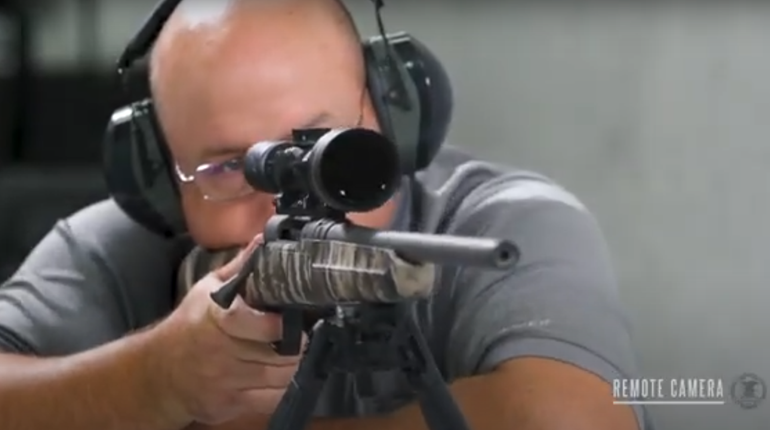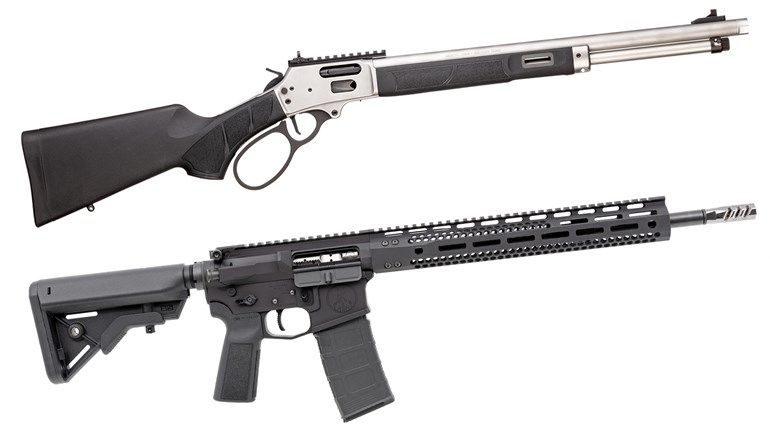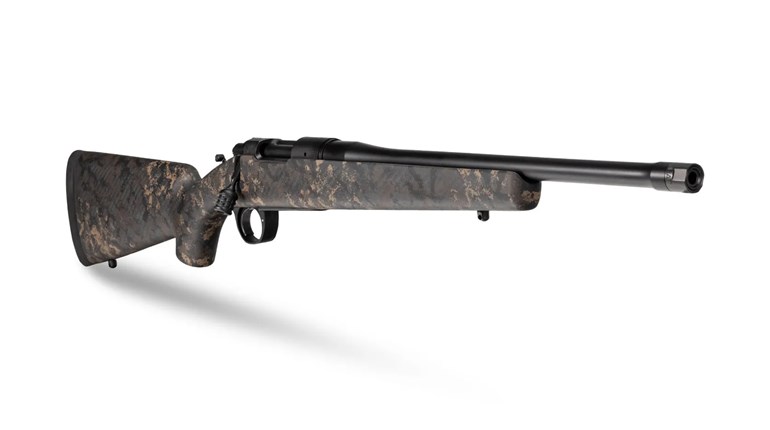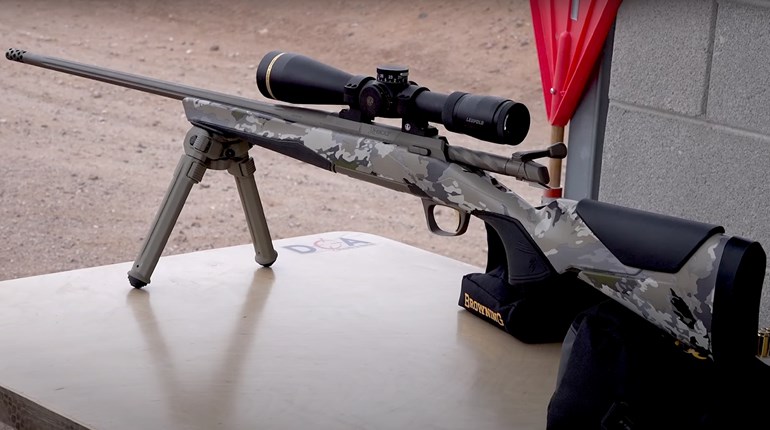
My new rifle finally shows up a couple of days before deer season and of course I am excited. I mount a Tract Toric riflescope and head to the range. The first three-shot group with Norma’s 130-grain target ammo measures .5 inch. I switch to the Norma 156-grain Oryx hunting load and fire another group while thinking it will never shoot as well as the target stuff.
Wrong. This group measures .4 inch.
This is a rifle so accurate that it could handle any ethical shot presented in hunting season, and a man lucky enough to own such a gun is destined for greatness in the whitetail woods. Right?
I would love to report that I shot multiple record-book whitetails with the gun, but my mother taught me not to lie. The sad truth is I carried the gun several days (I won’t tell you the number, it’s embarrassing) while hunting in two states and never fired a shot. There are reasons of course; there always are. Weather, moon, the rut, low deer numbers—it doesn’t matter. I just had bad luck, at least on the hunts where I took this rifle.
As they say, “Any fool can have bad luck; the art consists in knowing how to exploit it.” So please indulge me while I tell you about this gun. It more than held up its end of the deal and holds no fault for my dismal showing in the venison supply.
E.R. Shaw is a company in Pennsylvania that makes a huge number of rifle barrels in just about every configuration imaginable, including a lot of barrels for OEM use by some big-name gun makers. Odds are if you have a few rifles, you have one of Shaw’s barrels.
What a lot of hunters don’t know is the company also builds rifles based on its Mark VII action to customers’ specifications. You go online and design the hunting rifle you want, and what you get are custom features and custom gunsmithing at production-gun pricing. Shaw blueprints the action, laps the bolt lugs, cuts a custom minimum-spec chamber and glass-beds the action—all the stuff the big-time custom guys do.
Shaw offers a huge selection of chamberings ranging from .17 Rem. through .458 Lott. The company even lists a bunch of wildcat chamberings, including all the Ackley Improved cartridges. In fact, I was so pleased with my Mark VII rifle that I recently ordered a .35 Whelen Ackley Improved barrel from Shaw for a switch-barrel rifle project.
Ordering is simple: design the rifle via the company’s website, submit your choices and get a price. Shaw will come back with a phone call to nail down the details. Then the company builds the rifle and ships it to your FFL. All of this costs about the same as buying a popular production rifle. Shaw Mark VII rifles start at $775. The one I ordered is a 6.5-284 Norma with the best options Shaw offers in each of the selection categories, and it was $1,121. The current time from order to ship is about 10 months, so order early.
The first step is to pick the chambering. I chose the 6.5-284 Norma for a lot of reasons, but the biggest one was simple: I didn’t have a rifle chambered for that cartridge. Of course the 6.5-284 Norma is also a great choice for deer and antelope hunting. It made its bones as a long-range target cartridge and has found favor with hunters wanting to reach out to uncharted territory for deer-size game. Norma and Nosler make ammo with a wide range of bullet selections. With the current interest in all things 6.5mm there is a huge and growing selection of bullets for handloaders. I recently worked up a handload with a 95-grain Hornady V-Max at 3500 fps that should wreck coyotes. My dies are from Redding, and I highly recommend them.
Next, pick the receiver. The choices are chrome-moly or stainless steel with a polished or matte finish. My choice was matte stainless steel. The Mark VII is a modified version of the Savage action made to Shaw’s specifications, and the company mates the barrel to the action in the traditional way rather than by using the Savage barrel-nut system. In a custom gun this gives a better fit and eliminates the ugly nut.
Savage actions are legendary for their accuracy, and with Shaw’s custom blueprinting, the Mark VII makes for very reliable and accurate rifles. The Mark VII action comes with the Savage Accutrigger, or you can opt for a Timney trigger. Mine has the Accutrigger, and it breaks at 3 pounds, 14 ounces. Yes, left-handed shooters are welcome, but they will need to pay a discrimination tax of $20 for not being one of the commoners.
Step three is to pick the barrel: material, finish, length, contour and twist rate. Barrels are available in chrome-moly or stainless steel, polished or matte, in lengths from 16-26 inches in 1-inch increments, with a sporter or varmint contour. All the barrels are button-rifled, and the twist rate is listed on the online order form. My 6.5-284 Norma has a twist rate of 1:8 inches. You can order the barrel plain, with straight fluting or with spiral fluting. I went with a sporter-weight barrel, which measures .655 inch at the muzzle. It’s 23 inches long, just to be a bit different, in stainless steel with the matte finish and spiral fluting. Shaw has a patent on spiral fluting. You may see spiral fluting on a lot of guns today, but either those barrels are from Shaw or the manufacturer has a royalty agreement with Shaw.
The final selection is the stock, where you can pick from a couple of laminated wood options, checkered walnut or injection-molded synthetic. I chose laminated wood with the nutmeg color. Current Shaw rifles are designed with a blind magazine, although the company is developing a detachable-box magazine version. This leads me to my only complaint and it’s personal—though several friends who have tried the rifle do not agree with me. The stock is a bit thick at the balance point and does not fit my hand well when carrying the rifle. I have some insider info that Shaw is working on a trimmer, lighter stock, which may be available by the time this sees print.
The only negative about the Mark VII I could find was the stock, and that’s coming from a guy who would probably complain about free money. Bottom line, I like this rifle. It’s well built, good looking and extremely accurate. Now if I can just find something to shoot with it other than targets, life would be good.
Technical Specifications:
• Type: bolt-action centerfire rifle
• Caliber: 6.5-284 Norma (tested); others from .17 Rem. to .458 Lott available
• Barrel: 23"; stainless steel; sporter contour w/spiral fluting; button-rifled; 6 grooves, 1:8" RH twist
• Trigger: Savage Accutrigger; 3.9-lb. pull weight
• Magazine: internal blind box; 3-rnd. capacity
• Sights: none; receiver drilled and tapped for mounting optics
• Safety: three-position tang
• Stock: straight-comb, laminated wood; LOP 13.5"
• Metal Finish: matte stainless steel
• Overall Length: 44"
• Weight: 7.5 lbs.
• MSRP: $1,121 (as tested)






































